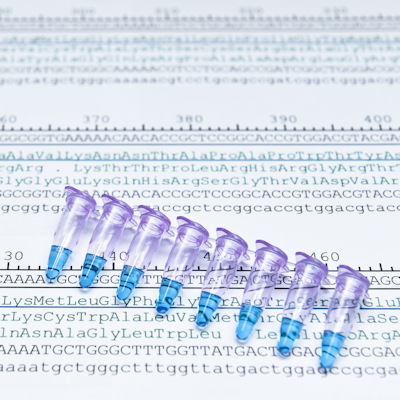March 12, 2021 -- Researchers have discovered that an isoform of the RNA editing enzyme adenosine deaminase acting on RNA 1 (ADAR1) is responsible for regulating genome stability of telomeres at chromosomal ends. The findings, published in Nature Communications on March 12, suggest that the enzyme is required for the proliferation of cancer cells and may be a potential therapeutic target for some cancers.
ADAR is the enzyme responsible for adenosine-to-inosine (A-to-I) RNA editing. ADARs contain multiple double-stranded RNA (dsRNA)-binding domains and a separate catalytic domain. ADAR1 has two isoforms: ADAR1p150 and ADAR1p110.
ADAR1p150 is mostly active in the cytoplasm where it regulates dsRNA-sensing mechanisms and editing the 3'-untranslated region (3'-UTR) dsRNAs to suppress activation of melanoma-differentiation-associated protein 5, mitochondrial antiviral signaling protein, and interferon (MDA5-MAVS-IFN) signaling. As well as playing a role in severe human autoimmune disease, ADAR1p150 has been demonstrated to have pro-oncogenic functions.
Alternatively, ADAR1p110 primarily localizes in the nucleus but its function remains mostly unknown.
"We discovered that in the nucleus, ADAR1p110 oversees a similar mechanism to ADAR1p150, the better-known cytoplasmic variant, but the editing process in this case targets particular nucleic acid structures called R-loops when formed at the chromosome ends," said Kazuko Nishikura, PhD, professor in the Gene Expression & Regulation Program of the Wistar Institute Cancer Center, in a statement. "Through this function, ADAR1p110 seems to be essential for cancer cell proliferation."
Newly transcribed RNA usually dissociates from its template DNA strand but occasionally forms a stable RNA-DNA hybrid, called an R-loop. The structure can span anywhere from 100 to 2000 base pairs and causes instability of the genome. Telomeres, consisting of repetitive sequences at the ends of chromosomes, are important for protecting the coding regions of DNA. However, telomeric repeat regions are prone to the formation of R-loops. Accumulation of R-loops can lead to neurological disorders and cancer.
In the study, using telomere fluorescence in situ hybridization (FISH) and immunostaining, the team found an accumulation of DNA damage in the absence of the ADAR1 gene. This underscores the importance of ADAR1-mediated A-to-I editing activity in the maintenance of telomere stability. Then, exploiting the replication protein A 32 kDa subunit (RPA32) as a marker for R-loops, the researchers showed that ADAR1 depletion resulted in significantly increased formation of the RNA-DNA hybrids, specifically in telomeric repeat regions. Knockdown experiments in ADAR1-depleted cells further showed that ADAR1p110 is required for suppression of R-loops.
Cancer cells often bypass the progressive shortening of telomeres that eventually triggers growth arrest or cell death to become immortal. The researchers found that ADAR1 depletion resulted in the accumulation of RNA and DNA strands of RNA-DNA hybrids of canonical and variant telomere repeats associated with those that are found in cancer cells. This indicates that ADAR1p110 potentiates nonalternative lengthening of telomeres (non-ALT) cancer cell survival.
The formation of R-loops can be prevented through the degradation of RNA strands in the RNA-DNA hybrid by RNase H1 and RNase H2, as well as unwinding of the hybrids by helicases. The researchers found that RNase H2, but not RNase H1, is critical for resolving telomeric R-loops by digesting RNA strands of mismatched RNA-DNA hybrids. Furthermore, the association of ADAR1p110 with RNase H2 suggests that the enzymes collaborate to resolve telomeric RNA-DNA hybrids.
"It has recently been suggested ADAR1 inhibitors could potentiate tumor response to immunotherapy by interfering with certain cytoplasmic ADAR1p150 functions," said Nishikura. "Based on our findings on the role of nuclear ADAR1p110 in maintaining telomere stability in cancer cells, we predict that ADAR1 inhibitors would be very effective anticancer therapeutics by interfering with two different and independent pro-oncogenic ADAR1functions exerted by the two isoforms."
Do you have a unique perspective on your research related to cancer or cell biology? Contact the editor today to learn more.
Copyright © 2021 scienceboard.net







